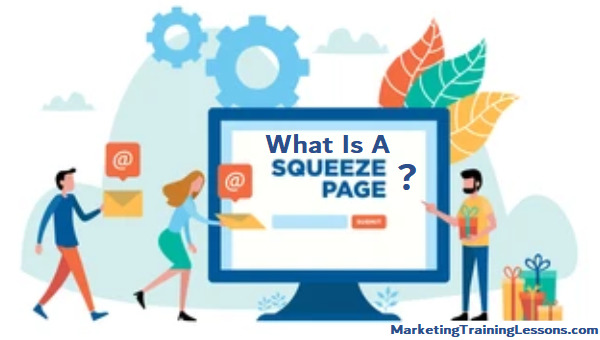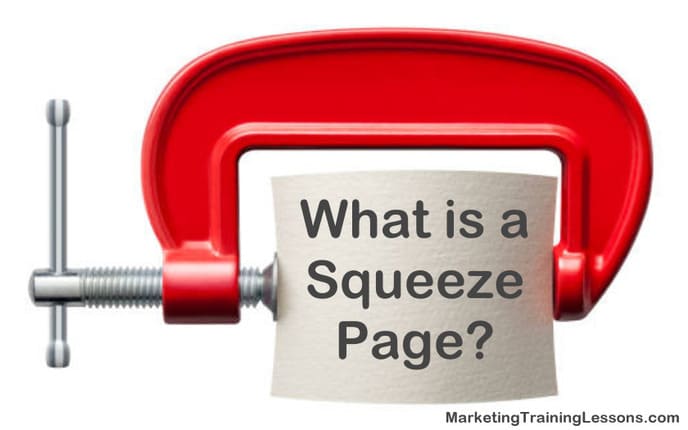What Is A Squeeze Page And Why You Need One

Introduction to Squeeze Pages
Let’s get right to it—What is a squeeze page, and why should you care?
If you’re serious about capturing more leads and taking your online business to the next level, you’re in the right place. Just a few minutes here could really streamline your growth strategy.
We’re going to clarify the difference between squeeze pages and landing pages—yes, there’s a real distinction, and it matters. I’ll explain how each tool can support your business objectives and help you drive tangible results.
Stick with me, and by the end, you’ll know how to leverage both squeeze and landing pages to maximize conversions and fuel your business success. Let’s dive in.
What Is A Squeeze Page And What Is The Difference With A Landing Page?
So, what is a squeeze page? A squeeze page is a type of landing page that is specially designed to capture lead information from visitors.
Unlike a landing page, a squeeze page is focused solely on collecting leads. A landing page on the other hand is typically used to promote a product or service.
Squeeze pages usually include a form that asks for visitor information, such as name and email address.
In exchange for this information, the visitor typically receives something of value in return. This can be a free ebook, video, or software, as long as it gives value to the subscriber.
The goal of a squeeze page is to convert as many visitors into leads as possible. To do this, squeeze pages must be carefully designed and optimized for high conversions.
Generating leads is an essential part of any successful online business. Some common elements of effective squeeze pages include:
• An attention grabbing headline that tells visitors what they will receive by providing their information
• A form that is short and easy to fill out
• A clear call-to-action (CTA) that tells visitors what they need to do next
• Social proof in the form of testimonials or customer reviews.
What is a Squeeze Page?
A squeeze page is a type of landing page that is specifically designed to capture lead information from visitors.
With a traditional landing page you can include multiple offers and CTAs. A squeeze page typically has only a single Call To Action.
This CTA encourages visitors to submit their contact information, mostly their email address. In exchange they get something of value, such as a white paper or e-book.
The purpose of a squeeze page is to build your contact list (subscribers list). You can use this list to market to your leads at a later date.
In order to be effective, squeeze pages must be designed with conversion in mind. That means including an attention-grabbing headline, compelling copy, and a strong CTA.
The goal is to get visitors to stay on the page long enough to enter their information. So it’s important to make sure your squeeze page is free of distractions.
Differences Between Squeeze Pages and Landing Pages
There are a few key differences between squeeze pages and landing pages that are important to understand.
First, squeeze pages are typically designed to collect email addresses from visitors. Landing pages can be used for a variety of purposes.
Second, squeeze pages usually have a very minimal design with a single call to action. With landing pages you can include multiple calls to action and they may be more complex.
Finally, squeeze pages are generally standalone pages not attached to a website. Landing pages are usually part of a larger website.

Benefits of Using a Squeeze Page
A squeeze page is a single web page that is specially designed to capture a visitor’s contact information. In exchange for the information the visitor usually get a free content offer.
Squeeze pages are typically used as part of a lead generation campaign to grow an email list. You probably have heard the saying “The money is in the list”.
There is a lot of money to be made from building a large email list. It should be top priority when you get started online to build a list of subscribers using a squeeze page.
There are several benefits of using a squeeze page over a traditional landing page:
1. Squeeze pages are focused on one conversion goal – collecting an email address.
This makes them simpler and more effective than landing pages. They often include multiple conversion goals (such as purchase intent, newsletter signups, etc).
2. The design of squeeze pages is usually very minimalistic. There will be just enough text and imagery to explain the offer and encourage visitors to sign up.
This helps to keep visitors focused on the conversion goal. The only action you want them to take, is signing up.
3. Squeeze pages are typically hosted on their own domain or subdomain. This will help to build brand awareness and increase trust with visitors.
4. As squeeze pages are designed for lead generation, they often include an email opt-in form. This can be used to immediately start building your email list.
5. You can A/B test different elements of your squeeze page (such as headline, copy, images, etc) to improve conversion rates over time.
How to Create an Effective Squeeze Page
By now you should have a better understanding about What is a squeeze page? Let’s find out what to do to create an effective squeeze page.
The most common form of a squeeze page is a lead capture form. The visitor must fill out their contact information in order to receive the offer.
Squeeze pages are typically used as part of a larger marketing campaign. They are designed to funnel traffic from other sources (such as pay-per-click ads or email campaigns) to the page.
Once on the squeeze page, visitors are encouraged to take action by filling out the form or subscribing to a newsletter.
The key to creating an effective squeeze page is to clearly state what the offer is and why the visitor should care about it.
The page should be free of distractions (such as navigation links or sidebars) so that the only thing the visitor can do is take action on the offer.
If you’re not sure where to start, there are plenty of resources and templates available online that can help you create an effective squeeze page for your business.
Examples of High Converting Squeeze Pages
There are a few key elements that all high converting squeeze pages have in common.
First, they all have a strong headline that immediately grabs the reader’s attention. The headline tells them what they can expect to learn from reading the page.
Second, they all have a short, easy to read description of what the page is about and what the reader will get out of it.
Finally, they all have a strong call to action that tells the reader exactly what to do next in order to get the desired result.
Tips for Optimizing Your Squeeze Page
Squeeze pages are stand-alone web pages that are designed to capture a visitor’s contact information, typically in exchange for a freebie.
A landing page, on the other hand, is a web page that is designed to drive a specific action from the visitor. This could be making a purchase or signing up for a newsletter.
So how do you optimize your squeeze page to make it more effective? Here are some useful tips:
1. Keep it simple
The goal of a squeeze page is to get the visitor’s contact information. So don’t clutter it up with too many distractions. Keep the design clean and the copy concise.
2. Use a strong headline
Your headline should be clear and attention-grabbing. The visitor must know what they’re getting when they sign up.
3. Offer something valuable
In order to get visitors to sign up, you need to offer them something that they will find valuable enough to exchange their contact information for. This could be a free ebook, an exclusive discount, or access to premium content.
4. Use images wisely
Images can be very effective at grabbing attention and conveying value, so use them judiciously on your squeeze page. Avoid using too many images or using images that are not relevant to the offer.
5. Use social proof
If you have testimonials or case studies from happy customers, be sure to showcase them on your squeeze page. This will help build trust with potential customers and show that your offer is valuable.
These are just a few tips for optimizing your squeeze page. If you know tips, you can share them in the comment section at the bottom of the page.
With the right design and engaging content, you can create an effective page that will help you capture more leads and boost conversions.
Conclusion
Squeeze pages and landing pages are two important and necessary tools for online marketers to generate leads.
While both have similar purposes, their approaches differ significantly.
So, what is a squeeze page? Squeeze pages serve as a form of opt-in page used to collect email addresses from visitors in exchange for an offer or incentive.
Landing pages, however, are designed to capture visitors’ attention and converting them into paying customers by providing more detailed information about a product or service.
With this knowledge in mind, you can now decide which approach is best suited for your business model and goals.
Thanks for reading this article about What is a squeeze page? Hopefully it was useful for you and that you can put this information to good use.
Click this link or the image below to read more about creating and using squeeze pages. It’s a blog from 2 people who have been working online for many years.

